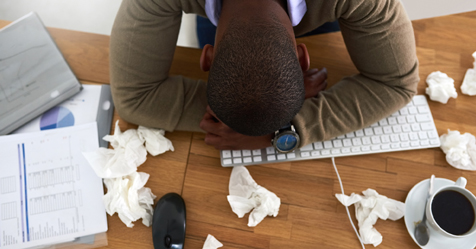Cleaning professionals often feel left out when it comes to general cleaning and disinfection guidance from federal authorities, such as the U.S. Centers for Disease Control & Prevention (CDC). Advice from the CDC and other federal agencies is often geared more toward health care workers and environmental services (EVS) staff in medical facilities than cleaning specialists in general buildings.
For instance, in health care settings, disinfection means killing 99.999% (5-log kill) of germs for some pathogens and 99.9999% (6-log kill) for others. However, the rule of thumb in the cleaning industry has been to use disinfectants that have a 5-log kill as most products that deliver a 6-log kill are not safe for use in a home or occupied public facility.
As they cannot always follow guidelines specific to health care facilities, professional cleaners need general advice suitable for all the buildings they service. Consider the tips below when setting up a disinfection process at your facility.
Choose biocidal products with caution
Take great care when choosing a biocidal product. Some disinfectants that offer a wide range of kill claims, such as glutaraldehyde, can cause potential serious health risks to the product users. The National Institute for Occupational Safety and Health (NIOSH) states there is no safe level of exposure to glutaraldehyde over an 8-hour day or 40-hour week. The antimicrobial product most cleaners who service the built environment use is a hospital-grade disinfectant with a tuberculosis kill claim.
Before choosing an antimicrobial biocide, perform a risk assessment to ensure you choose the correct product for specific hazards of the worksite. All disinfectants have a list of biologicals that they are proven to inactivate (kill). For example, when dealing with the coronavirus that causes COVID-19, cleaners are expected to use a disinfectant that is on the U.S. Environmental Protection Agency’s (EPA) List N, as products on this list have demonstrated efficacy against the virus.
Antimicrobial products used in the United States must have a label that includes an EPA registration number. Think of a disinfectant product label as a contract between the product manufacturer and the end-user. If you follow the label directions, you will get the promised kill claim.
Avoid these common disinfection mistakes
The key steps to successful cleaning and disinfecting are:
- Preclean the area thoroughly (Porous surfaces such as concrete may require multiple cleanings.)
- Choose the appropriate disinfectant product
- Allow the contact time or dwell time specified on the product label
- After reaching the dwell time, remove disinfectant residues from the surface, if required.
Precleaning is the step most overlooked by professional cleaners. Most disinfectant products work best when applied to a clean surface. If these products touch a contaminated surface they become “inactivated” and do not penetrate past the first layer of germs.
Another commonly overlooked step is not allowing the disinfectant to stay wet on the surface for the required contact time. Some products require up to a 10-minute dwell time, which can be challenging in a dry environment. To achieve proper dwell time, consider choosing disinfectant products that require shorter contact times such as those with a 1- to 5-minute range. For vertical surfaces, think about switching your cleaner/disinfectant solutions to foamers and using products that can be applied by electrostatic sprayers to maintain the contact time.
Use proper terminology
It’s good customer service to let your clients know their site is sanitary and safe to occupy. However, do not declare a site “fully disinfected,” even after you’ve used a disinfectant that inactivates the biological agent your customers are trying to eliminate. Instead, say that you have “applied the appropriate disinfectant” or “have performed a cleaning that has reduced the contaminants and have applied an approved disinfectant product to surfaces X, Y, and Z.” In high-risk situations, you may want to go a step further to have the site cleared and deemed safe via a post-remediation verification from an independent, third-party, indoor environmental professional.
Remember, a freshly cleaned and disinfected building can become contaminated the moment a new person enters the site. Help your customers understand this. Use proper terminology for the services you have completed and follow the product’s label directions implicitly. Follow the law by applying antimicrobials according to the methods outlined on the label directions. If the directions do not say you can apply the product with a fogger or an electrostatic sprayer, then do not do it.




